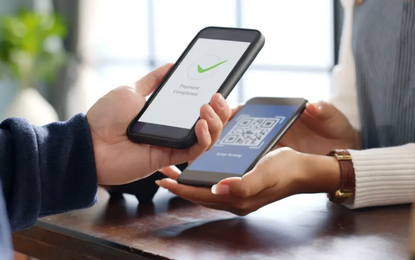

Banks are experimenting with decentralized finance (DeFi) and stablecoin loans backed by assets such as cash or soybeans.
Currently, decentralized finance or DeFi is an open space where users access banking services without the need for an intermediary institution. Anyone with an internet connection can make use of this digital infrastructure to buy, borrow, save, invest, and more.
DeFi shares characteristics with traditional finance in that sense, but the big difference lies in the execution. Smart contracts are the underlying technology that gives life to this concept, without the intervention of a mediating authority such as a bank.
They’re digital agreements between two parties that are stored in an unchangeable public database. That space is blockchain, which acts as a ledger for digital currencies.
The role of this smart contract is to allow, for example, someone to borrow or lend a digital currency, without the intervention of an intermediary that facilitates the transaction and charges a fee.
This protocol has begun to attract the attention of the traditional financial industry, which sees it as a way to adapt to the trends and demands of users, as well as to reduce costs.
But how can a decentralized system be linked with a centralized one? The answer could lie in stablecoins, which have a legal tender or fiat such as the euro or the Mexican peso, as collateral. For example, usdT is backed by the U.S. dollar.
As pointed out by the Bank for International Settlements (BIS), stablecoins will continue to play an important role in the DeFi ecosystem, as they facilitate the transfer of funds between platforms and users so that participants don’t have to convert their currency to a crypto asset, and vice versa, for every operation.
By automating processes, DeFi infrastructure has the potential to reduce costs for sending money internationally, initiate cryptographic savings and—among the latest trends—become an option for lending.
This new concept can work in two ways. In the first, a platform for buying and selling (or exchanging) crypto assets is used to connect two people: one who wants to lend and another who wants to borrow, in a decentralized framework. Interest—which accrues weekly or monthly—is paid directly to the creditor, while the borrower places their own virtual assets as collateral.
With the second approach, which in a sense links decentralized with traditional finance, banks or fintechs grant credits backed by virtual assets to clients who receive the loans in fiat currency or other physical assets. For example, Mexican startup Del.ai, which issues microcredits to small and medium-sized businesses, is leveraging stable cryptocurrencies as capital to expand its portfolio. However, its clients receive the funds in their accounts in Mexican pesos and repay them in the same currency.
However, the volatility of cryptocurrencies is a source of concern for many. Global regulators warned this year that virtual assets could threaten the stability of the financial system because of their expansion, swings in value, and an increasingly close relationship with the traditional financial industry. Therefore, a crucial aspect of crypto loans is the use of a stable asset, such as stablecoins, in order to give more certainty to the process.
This type of loan has various benefits and is gaining support due to its practicality and the way it is rebuilding the relationship between credit and users.
These loans also carry low interest rates compared to credit cards and other similar traditional products and don’t require credit histories.
You might think that crypto lending is still far removed from the traditional banking environment, but the truth is that some market players are already experimenting with these new, disruptive products.
For example, a blockchain-focused startup has partnered with Banco Santander in Argentina to create the first global alliance to back loans with tokens linked to agricultural commodities, such as grains.
To test this system, Agrotoken launched a pilot involving 1,000 farmers who obtain loans backed by agricultural tokens that are repayable in cryptocurrency or cash.
Agrotoken's three commodity tokens are each backed by a ton of grain.
By tokenizing their crops, farmers can exchange them for products or other cryptocurrencies. They can also employ them as collateral on other loans, or for payments on other products or services provided by other merchants participating in the program.
According to Accenture, which conducted a case study on the project, this alliance of a fintech with a financial institution is allowing "the development of a system of loans with a symbolic guarantee that allows farmers easy and fluid access to a new credit system at competitive rates."
initiatives of this nature could grow in number in the coming years.
In fact, BIS projections suggest that DeFi infrastructure and traditional financial activities will increasingly see linkages allowing the development of businesses in the growing crypto market.
Join our online community and stay up to date with the latest news from the world of technology.